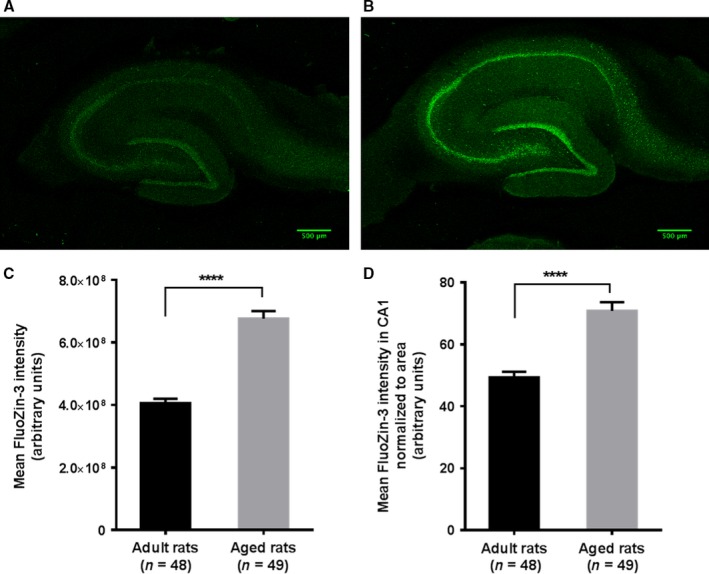Figure 3.

Zn2+ levels are increased in the hippocampus of aged rats compared with adult rats. A cell‐permeable fluorescent Zn2+ indicator FluoZin‐3 (AM) was used to visualize Zn2+ in hippocampus. The acute hippocampal slices (400 μm thick) were incubated in ACSF at 32 °C for 2 h and then stored in 4% paraformaldehyde/PBS at 4 °C. Following three washes in ACSF, slices were treated with 2 μm FluoZin‐3 solution for 10 min in dark, rinsed once with ACSF and imaged with a confocal microscope. (A) FluoZin‐3 fluorescence from a representative hippocampal slice of 5‐ to 7‐week‐old adult rat. (B) FluoZin‐3 fluorescence from a representative hippocampal slice of aged rat (82–84 weeks old). (C) A plot of mean fluorescence intensities (raw intensity density) from slices of adult rats (n = 48 slices) and aged rats (n = 49 slices). The analysis showed a significant increase in the mean fluorescence intensity in the aged rat group compared with the adult rat group (Unpaired t‐test with Welch's correction, t = 9.60; ****P < 0.0001). (D) A plot of mean fluorescence intensities from the CA1 region (raw intensity density normalized to area) from slices of adult and aged rats. A significant increase was observed in the mean fluorescence intensity in the aged rat group compared with the adult rat group (Unpaired t‐test with Welch's correction, t = 6.44; ****P < 0.0001).
